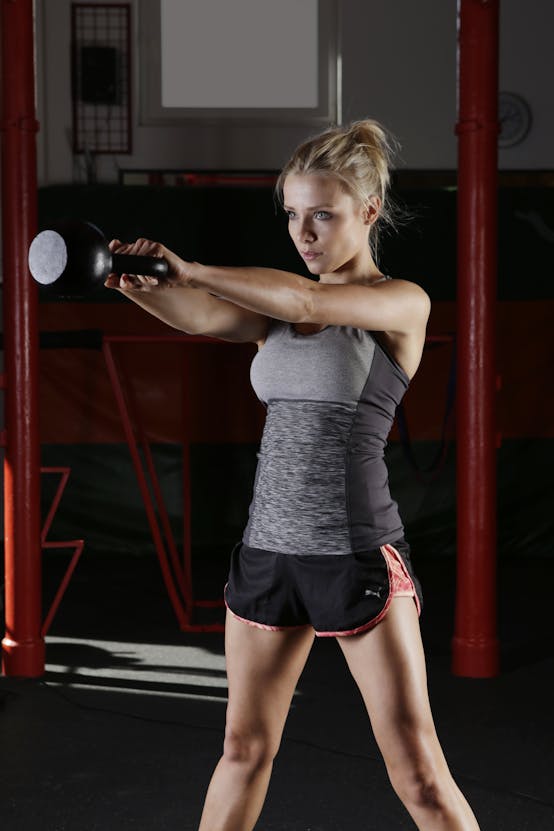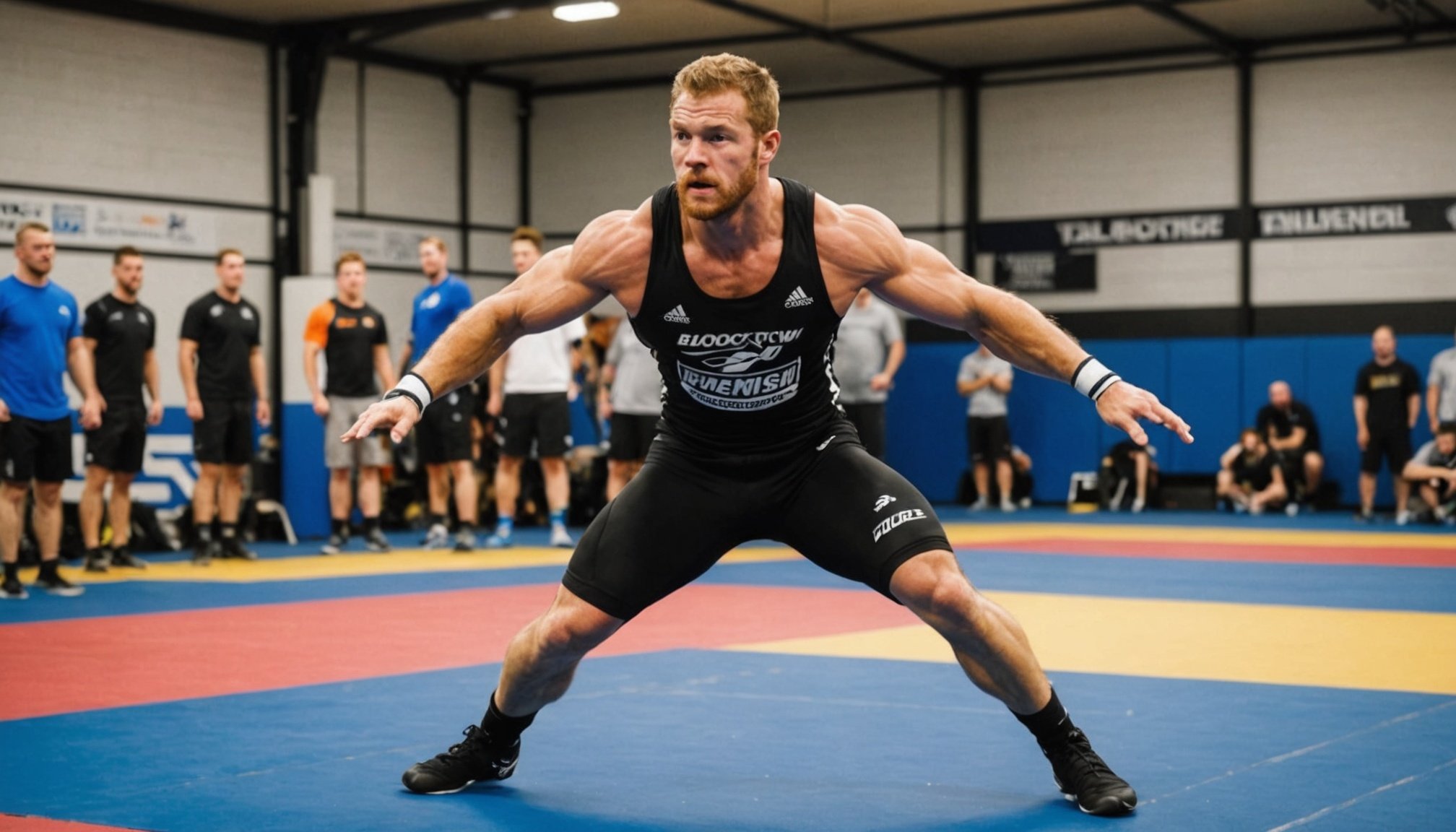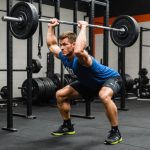Importance of Takedown Speed in Wrestling
In the world of wrestling, takedown speed is a decisive factor that can significantly affect an athlete’s success. Swift and effective takedowns can instantly alter the dynamics of a match, shifting the balance in favour of the wrestler. The ability to execute takedowns rapidly is often linked to superior wrestling techniques that refine an athlete’s overall performance.
Fast takedowns not only demonstrate physical prowess but also strategic acumen. During a match, a wrestler’s ability to quickly transition between defensive and offensive maneuvers often dictates the outcome. A rapid takedown can disrupt the opponent’s rhythm and lead to scoring opportunities that might otherwise be missed. Successful integration of speed into wrestling techniques thereby maximises an athlete’s performance and effectiveness.
Also to discover : Mastering Cage Control: Effective Strategies for UK MMA Fighters to Enhance Their Technique
Different wrestling styles demand distinct takedown strategies. For instance, in freestyle wrestling, speed is essential for executing double leg takedowns efficiently, whereas Greco-Roman wrestling may focus on upper body throws where quick thinking is essential. Each style presents unique challenges and opportunities, necessitating tailored approaches to takedowns that cater to specific tactics and objectives of the style being practiced.
Understanding and honing takedown speed is crucial for wrestlers aiming to improve their athlete performance and achieve greater success on the mat.
Also to see : Unlocking Performance: The Advantages of Adding Swimming to a UK Boxer’s Training Regimen
Understanding Plyometric Training
Incorporating plyometric training into a fitness regimen can significantly enhance explosive strength and boost athletic performance. Plyometric training involves exercises that require muscles to exert maximum force in short intervals, with the ultimate goal of increasing speed and power. This form of training typically includes movements like jumping, bounding, and quick, forceful transitions, which are integral to developing the ability to produce rapid and powerful movements.
The principles of plyometric training focus on the stretch-shortening cycle, where the muscle undergoes a rapid stretch followed by an explosive contraction. This method efficiently converts muscular strength into speed and power. As such, athletes, especially those participating in sports requiring agility and speed, often incorporate plyometrics to enhance their performance.
The physiological benefits of explosive training are multifaceted, improving not only muscular power and strength but also enhancing neuromuscular coordination and efficiency. Enhanced muscle activation and improved nervous system responses contribute to faster, more dynamic movements. Furthermore, consistent plyometric training can lead to better balance, coordination, and overall athletic capability. By focusing on specific exercises that develop these attributes, athletes can achieve notable improvements in their competition results, underscoring the vital role that plyometric training plays in sports performance enhancement.
Key Plyometric Exercises for Wrestlers
Plyometric exercises are critical for wrestlers seeking to enhance their explosive movements. These training drills focus on developing power and speed, vital attributes in wrestling.
Jump Squats
Jump squats are a fundamental plyometric exercise beneficial for increasing leg power. When performed correctly, they enhance strength by targeting the quadriceps, hamstrings, and calves. The explosive nature of jump squats requires wrestlers to push off the ground forcefully, simulating the rapid dynamism needed in matches.
Box Jumps
The primary benefit of box jumps is improved explosiveness. This exercise trains wrestlers to exert maximum force in a short period. By jumping onto an elevated surface, wrestlers learn to harness their power efficiently. Box jumps are also excellent for developing core stability, an essential aspect for maintaining balance during matches.
Depth Jumps
Depth jumps are pivotal for improving reaction time. By stepping off a box and immediately jumping upon landing, athletes practice quick reflexive movements. This drill enhances coordination and timing, crucial for outmaneuvering opponents. Depth jumps also aid in strengthening tendons, reducing the risk of injury while boosting overall athletic performance.
Developing a Plyometric Training Regime
Designing an effective training regime for plyometrics involves careful planning and integration with your existing workout schedule. A well-structured workout plan can enhance athletic performance, especially in sports that require explosive movements like wrestling.
Begin by structuring your weekly training sessions around specific goals. Typically, incorporating plyometric exercises two to three times a week is beneficial. This allows for adequate recovery time while still maximising the benefits of plyometric training. Remember, repetition is not the sole focus; quality and technique are crucial.
Next, integrating plyometrics with your wrestling plyometric schedule can amplify your strength and agility. For example, consider coupling high-intensity plyometric drills, like jump squats, with technical wrestling drills. This synergistic approach ensures both skill refinement and physical conditioning.
Don’t overlook the significance of a proper warm-up and cool-down routine. A warm-up increases blood flow, preparing muscles for intensive exercises, while a cool-down helps to mitigate soreness and aid recovery. Including dynamic stretches before and static stretches post-workout can contribute to injury prevention and improve flexibility.
In conclusion, a balanced plyometric training regime, consistent with your goals and fitness level, can significantly boost your competitive edge in wrestling.
Common Challenges in Plyometric Training
Plyometric training offers significant benefits for athlete performance; however, it also presents unique training challenges. One notable concern is identifying potential injury risks. With the rapid, explosive movements inherent in plyometrics, athletes are at an increased risk of injuries like strains and sprains. Proper injury prevention strategies include a thorough warm-up, correct technique, and gradual progressions in intensity.
Mental barriers are another challenge; some athletes may hesitate before performing powerful movements due to fear of injury or failure. Building mental resilience is crucial. Coaches can facilitate this by creating a supportive environment and encouraging gradual exposure to increasingly complex movements.
Adjusting training for varying skill levels can further complicate plyometric training. Beginner athletes might struggle with the high-intensity nature of these exercises, while advanced athletes may require more complex routines to stay challenged. Tailoring programs based on individual skill levels ensures safety while maximizing performance improvements.
Solutions include:
- Focusing on form over speed or height to reduce injury risk.
- Gradual progression in exercise difficulty to accommodate skill levels.
- Implementing mental coaching techniques to overcome fear and enhance confidence.
Understanding these challenges and addressing them proactively aids in developing effective training regimes that boost athlete performance while ensuring their continued safety.
Benefits of Plyometric Training for Wrestlers
Wrestlers looking to improve their performance enhancement should consider integrating plyometric training into their regimen. This form of training focuses on explosive movements that significantly contribute to athletic benefits, such as improving speed and strength.
Plyometric exercises can greatly enhance a wrestler’s reaction times and agility, skills that are crucial for quick maneuvers and counters during a match. By regularly practising exercises such as box jumps and burpees, wrestlers can react with unprecedented speed against opponents, gaining a competitive advantage.
Additionally, strength training through plyometrics can contribute to enhanced muscle coordination and balance. Precise movements that plyometrics promote are essential for maintaining muscle coordination during complex grappling sequences. Improved balance, as a result, helps wrestlers hold their positions solidly, reducing the likelihood of being overpowered.
Implementing plyometric exercises into a wrestlers’ routine provides comprehensive athletic benefits. These exercises not only boost strategic agility and speed but also develop strength and stability. For sustained performance enhancement, plyometric training is an invaluable tool that aids wrestlers in excelling within their sport. With every jump or rapid movement, athletes are preparing their bodies for the unique demands of wrestling, making each bout potentially more successful.
Tips for Coaches on Implementing Plyometrics
Effectively implementing plyometric techniques in athlete training requires strategic coaching tips to ensure optimal performance and safety. Plyometrics, when done correctly, can greatly enhance an athlete’s power and agility. One critical strategy is to ensure individualized training plans tailored to each athlete’s unique needs and goals. This personalized approach not only maximizes performance but also minimizes the risk of injury.
Incorporate various plyometric techniques that progress from basic to more advanced movements, based on the athlete’s capability. Begin with fundamental exercises such as box jumps and gradually introduce more complex combinations to keep the training challenging and engaging.
Utilizing technology and resources for performance tracking is another key element in successful plyometric training. Performance tracking tools, such as wearable technology, offer valuable insights into an athlete’s progress. These tools provide data on metrics like jump height and landing force, which can inform coaches in real-time to adjust training protocols accordingly.
When coaching athletes, it’s essential to continuously offer feedback and encouragement. A supportive environment not only boosts morale but also fosters improvement. Encourage athletes to focus on proper technique and landing mechanics to improve effectiveness and reduce injury risks. As with any training regime, consistency and gradual progression are fundamental to the long-term success of plyometric training.
Additional Resources and Demonstrations
To enhance your understanding of plyometric training, a variety of training resources are available. Incorporating video demonstrations can significantly aid in grasping the exercises visually, allowing for more effective learning. Many platforms offer a wide selection of these demonstrations, showcasing proper techniques and sequences essential for optimizing performance.
In addition, numerous online articles and books offer further reading to deepen your knowledge. These resources delve into the biomechanics and benefits of plyometric training, making them invaluable for both beginners and experienced individuals seeking to refine their skills.
Accessing community support can also be incredibly beneficial, especially for wrestlers and coaches looking to adopt or improve plyometric training strategies. Engaging with online forums and local sports groups can provide insights and advice from seasoned practitioners. These communities often share coaching materials, tip-sharing discussions, and even organize meetups or workshops.
For those seeking tailored guidance, consider reaching out to specialized training centers or hiring a personal coach. These experts can provide personalized recommendations and insights tailored to your unique needs, ensuring you get the most out of your plyometric training experience. Whether you’re a professional wrestler or a coach aiming to boost your athletes’ performance, these resources can be invaluable.













